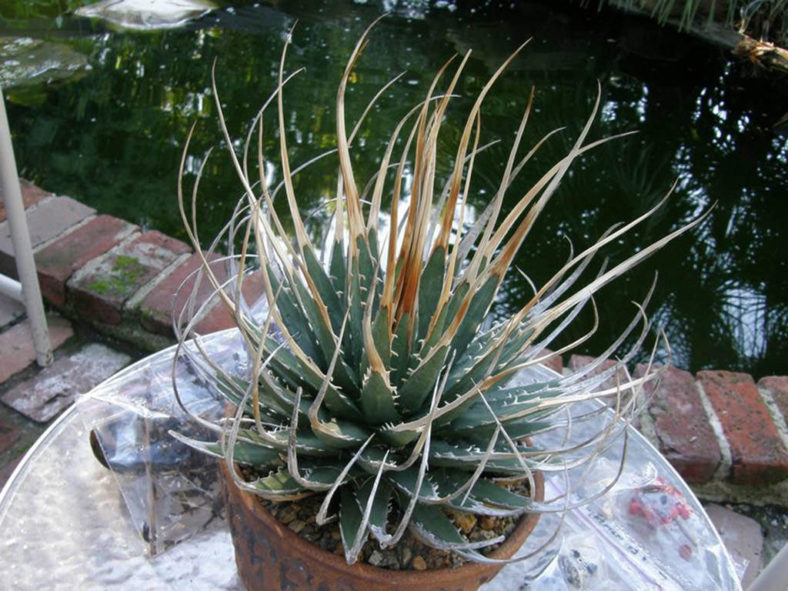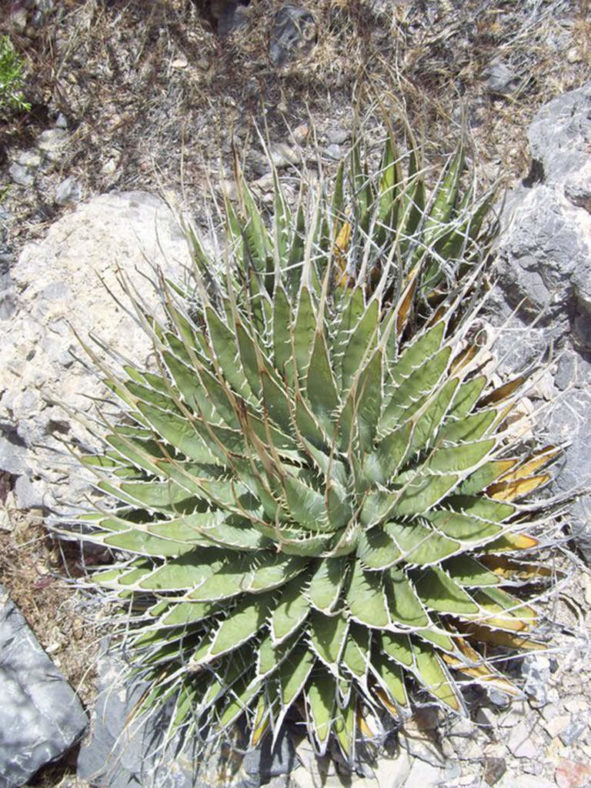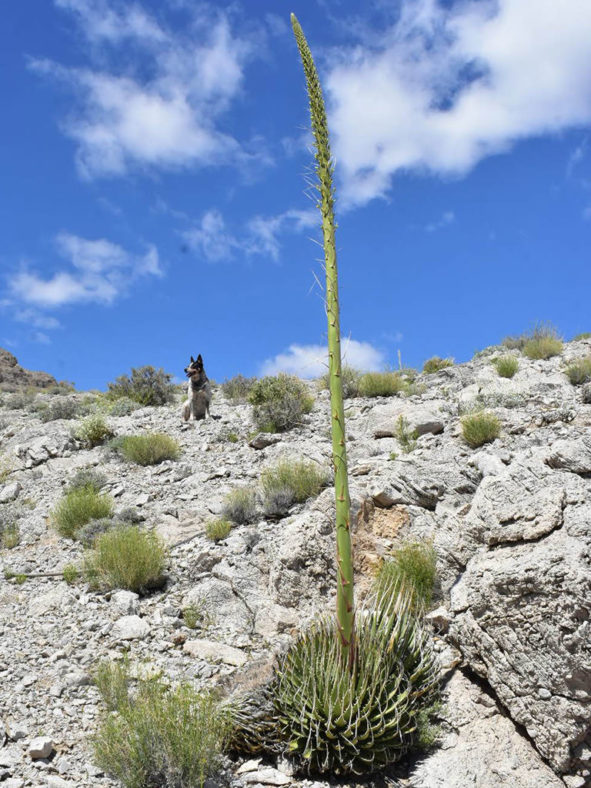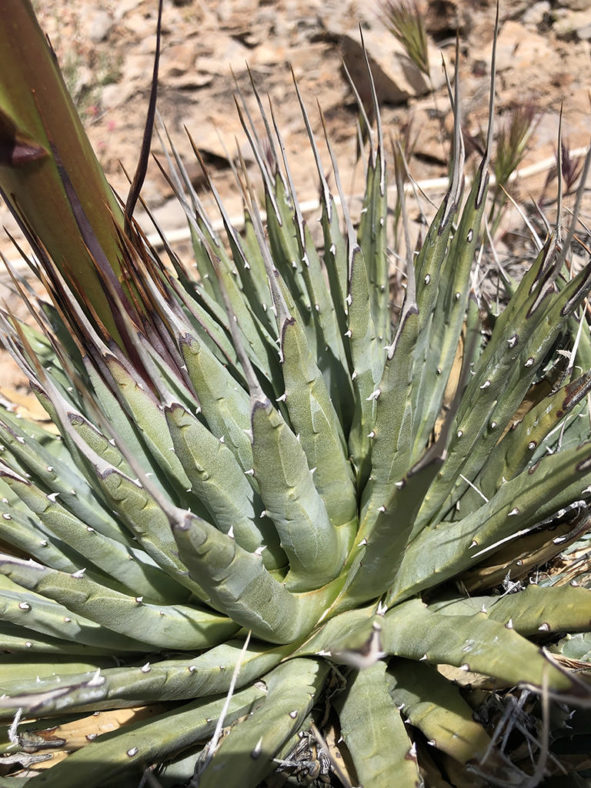Scientific Name
Agave utahensis var. eborispina (Hester) Breitung
Common Name(s)
Ivory-spined Agave
Synonym(s)
Agave eborispina
Scientific Classification
Family: Asparagaceae
Subfamily: Agavoideae
Genus: Agave
Etymology
The varietal epithet "eborispina (e-bor-ee-SPIN-uh)" means "Ivory-spined" and refers to the ivory-colored terminal spine on the leaves.
Origin
Agave utahensis var. eborispina is native to the United States. It occurs on dry limestone slopes at elevations from 3,000 and 5,000 feet (900 and 1500 m) in California, Nevada, and Utah.
Description
Agave utahensis var. eborispina is a small succulent that forms rosettes of olive green to blue-green leaves with heavily toothed margins and a stout, ivory-colored terminal spine. The rosettes can reach up to 1 foot (30 cm) in height and nearly equal in diameter. The leaves can grow up to 1 foot (30 cm) long and up to 1.2 inches (3 cm) wide and have marginal teeth measuring up to 0.6 inches (1.5 cm) long and a terminal spine measuring up to 8 inches (20 cm) long.
In late winter or spring, the mature rosettes send up an erect stalk with many yellow flowers. The flower stalk can grow up to 12 feet (3.6 m) tall. After the rosette blooms, it dies.

How to Grow and Care for Agave utahensis var. eborispina
Light: Like all Agaves, this plant requires full sun to partial shade. If growing A. utahensis var. eborispina indoors, choose a bright, sunny window with as much sun as possible. From spring to fall, it loves going outside.
Soil: A. utahensis var. eborispina will tolerate most soils as long as they have good drainage, but it prefers sandy or rocky soil.
Hardiness: During the growing season, it likes warm temperatures, while in winter, when resting, this succulent enjoys cooler temperatures. A. utahensis var. eborispina can withstand temperatures as low as -6 to 40 °F (-20.6 to 4.4 °C), USDA hardiness zones 6b to 10b.
Watering: From spring to fall, water thoroughly when the soil becomes dry. In winter, water sparingly about once a month. Plants in containers require more frequent watering than those in the ground.
Fertilizing: Give your A. utahensis var. eborispina a small amount of fertilizer in the spring during the first two years. Established plants seem to take care of themselves.
Repotting: If you notice your A. utahensis var. eborispina becoming pot-bound, repot it with fresh soil in a new pot slightly larger than the old one. Give the plant a week or so to readjust before watering it again.
Propagation: Since it can take years to produce seeds, A. utahensis var. eborispina is usually propagated by offsets. The best time to remove the offsets is in spring and summer. Sow the seeds in spring.
Learn more at How to Grow and Care for Agave.
Toxicity of Agave utahensis var. eborispina
A. utahensis var. eborispina is not toxic to humans but may be mildly poisonous to children and pets.
Links
- Back to genus Agave
- Succupedia: Browse succulents by Scientific Name, Common Name, Genus, Family, USDA Hardiness Zone, Origin, or cacti by Genus
Photo Gallery
Click on a photo to see a larger version.


